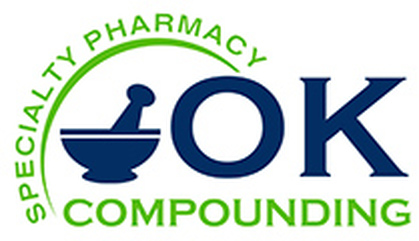WHAT IS COMPOUNDING?
Compounding is simply customizing medication to fit different individual needs. Our pharmacists make all of our products in house to insure the highest quality and customer satisfaction.
Because of this, we take great pride in what we make! We know our products meet all necessary state and federal regulations, and further, know that it makes a huge difference in patient results. Whether it’s keloid and scar removal, or migraine treatment, we are here to help!
OK Compounding specializes in the following: pain creams, wound creams, scar cream, gout cream, migraine treatment, peripheral artery disease, plantar fascitis, psoriasis topical cream, and anti-fungal creams. For a list of our services, see below.
TOPICAL PAIN MANAGEMENT
OK COMPOUNDING is a compounding pharmacy that specializes in topical medication therapy. As a leading developer and provider of custom topical treatments for debilitating conditions, OK Compounding is the answer for those who are not ideal candidates for commercial pharmaceuticals, oral medications, or surgery. Our compounding experts extensively study the effects of medications and delivery methods to create specialized formulations that target all types of pain and inflammation at the source.
Our topical formulations have extensive research and proven experience behind them. The ingredients and components that make up every formulation are specifically selected for their synergistic qualities and collaborative effect on specific pain pathways or treatment modalities. We have invested in state-of-the-art equipment, purchase only high quality ingredients and developed detailed processes to ensure our products are compounded consistently, and precisely to patient needs and limitations. Since every prescription is made for an individual patient, OK Compounding can customize treatments and address any unique characteristics in each condition and circumstance. This carefully thought out process allows us to remain responsive to your preferences, as well as enables us to continuously investigate new findings and advancements in topical medication therapy.
With OK Compounding, prescribing a compound is simple. Ask your Go2Strategy Health Solutions representative for a comprehensive list of our formulations, and select the indications that are prevalent in your specific patient base.
OK COMPOUNDING TOPICAL CREAMS
Compounding is simply customizing medication to fit different individual needs. Our pharmacists make all of our products in house to insure the highest quality and customer satisfaction.
Because of this, we take great pride in what we make! We know our products meet all necessary state and federal regulations, and further, know that it makes a huge difference in patient results. Whether it’s keloid and scar removal, or migraine treatment, we are here to help!
OK Compounding specializes in the following: pain creams, wound creams, scar cream, gout cream, migraine treatment, peripheral artery disease, plantar fascitis, psoriasis topical cream, and anti-fungal creams. For a list of our services, see below.
TOPICAL PAIN MANAGEMENT
OK COMPOUNDING is a compounding pharmacy that specializes in topical medication therapy. As a leading developer and provider of custom topical treatments for debilitating conditions, OK Compounding is the answer for those who are not ideal candidates for commercial pharmaceuticals, oral medications, or surgery. Our compounding experts extensively study the effects of medications and delivery methods to create specialized formulations that target all types of pain and inflammation at the source.
Our topical formulations have extensive research and proven experience behind them. The ingredients and components that make up every formulation are specifically selected for their synergistic qualities and collaborative effect on specific pain pathways or treatment modalities. We have invested in state-of-the-art equipment, purchase only high quality ingredients and developed detailed processes to ensure our products are compounded consistently, and precisely to patient needs and limitations. Since every prescription is made for an individual patient, OK Compounding can customize treatments and address any unique characteristics in each condition and circumstance. This carefully thought out process allows us to remain responsive to your preferences, as well as enables us to continuously investigate new findings and advancements in topical medication therapy.
With OK Compounding, prescribing a compound is simple. Ask your Go2Strategy Health Solutions representative for a comprehensive list of our formulations, and select the indications that are prevalent in your specific patient base.
OK COMPOUNDING TOPICAL CREAMS
- Minimize absorption into the blood stream
- Direct delivery to targeted pain receptors
- Block portions of the inflammatory cascade
- Reduce organ toxicity
- Produce fewer side effects
- Reduce possibility of adverse drug interactions
- Quickly provide measurable and identified results
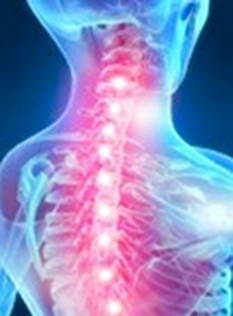
MUSCULOSKELETAL PAIN
Musculoskeletal pain is pain that affects the muscles, ligaments, tendons, and bones. Pain can be found in the back, neck, shoulder, and other areas as well. Many patients suffer from widespread musculoskeletal pain. Issues such as lower back pain have even been referred to as the most common cause of disability in American below the age of 45. Oral medications can make working nearly impossible due to their side effects.
OK Compounding can provide a topical musculoskeletal pain cream that will target the specific site of a patientsʼ pain. This cream contains multiple agents that target the various pathways that cause musculoskeletal pain. Using a topical cream should decrease the amount of oral pain medications needed, reduce gastrointestinal distress, and decrease unwanted side effects. A topical cream for musculoskeletal pain is a much less invasive than traditional medications or surgical procedures.
OK Compoundingʼs musculoskeletal formula can be customized to meet an individual patientʼs needs.
Contact your Go2Strategy Health Solutions representative, or pharmacist for additional resources, or questions regarding topical use for musculoskeletal pain .
Musculoskeletal pain is pain that affects the muscles, ligaments, tendons, and bones. Pain can be found in the back, neck, shoulder, and other areas as well. Many patients suffer from widespread musculoskeletal pain. Issues such as lower back pain have even been referred to as the most common cause of disability in American below the age of 45. Oral medications can make working nearly impossible due to their side effects.
OK Compounding can provide a topical musculoskeletal pain cream that will target the specific site of a patientsʼ pain. This cream contains multiple agents that target the various pathways that cause musculoskeletal pain. Using a topical cream should decrease the amount of oral pain medications needed, reduce gastrointestinal distress, and decrease unwanted side effects. A topical cream for musculoskeletal pain is a much less invasive than traditional medications or surgical procedures.
OK Compoundingʼs musculoskeletal formula can be customized to meet an individual patientʼs needs.
Contact your Go2Strategy Health Solutions representative, or pharmacist for additional resources, or questions regarding topical use for musculoskeletal pain .
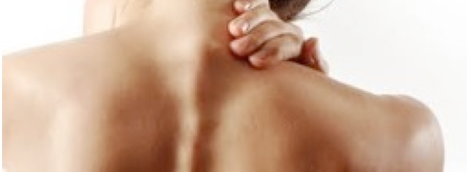
Common Musculoskeletal Pain Conditions
- Back Pain
- Neck Pain
- Tendonitis
- Myalgia
- Stress Fractures
**Any pain affecting muscles, tendons, ligaments and bones.
Ketamine acts peripherally to antagonize NMDA receptors as well as provide local anesthesia.
Flurbiprofen is an anti-inflammatory (NSAID). NSAIDs have long been used for chronic and acute musculoskeletal pain. Used topically, unwanted gastrointestinal and cardiovascular side effects are drastically avoided.
Gabapentin is used to treat the neuropathic hyperexcitabilty at the pain site.
Baclofen and Cyclobenzaprine are muscle relaxers that when used topically are highly effective in muscle tissue at the site of pain, allowing for effective dosing with minimal systemic absorption that could cause drowsiness if taken orally.
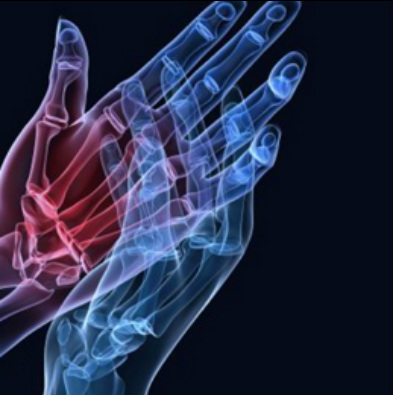
JOINT PAIN
Joint pain is described as any discomfort arising from any joint. The pain is often referred to as arthritis or arthralgia. Joint pain can range from mild discomfort to debilitating pain causing severe limitations in mobility. Although mostly prevalent in the older population, anyone can be affected by joint pain. Daily pain can affect mobility, independence, and quality of life.
NSAIDs have long been known to be highly effective at treating joint
pain; however, their dangerous side effects include gastrointestinal discomfort, bleeding, and cardiovascular events. Topical use of creams for joint pain not only drastically reduce these side effects, it allows for continued long term use as needed. Combined with agents that provide additional pain relief through other mechanisms a patientsʼ mobility, independence and quality of life can improve.
Ok Compounding can provide a joint pain cream that can be individualized to a patientʼs needs. Contact your Go2Strategy Health Solutions representative, or pharmacist for more resources or questions
regarding joint pain.
Joint pain is described as any discomfort arising from any joint. The pain is often referred to as arthritis or arthralgia. Joint pain can range from mild discomfort to debilitating pain causing severe limitations in mobility. Although mostly prevalent in the older population, anyone can be affected by joint pain. Daily pain can affect mobility, independence, and quality of life.
NSAIDs have long been known to be highly effective at treating joint
pain; however, their dangerous side effects include gastrointestinal discomfort, bleeding, and cardiovascular events. Topical use of creams for joint pain not only drastically reduce these side effects, it allows for continued long term use as needed. Combined with agents that provide additional pain relief through other mechanisms a patientsʼ mobility, independence and quality of life can improve.
Ok Compounding can provide a joint pain cream that can be individualized to a patientʼs needs. Contact your Go2Strategy Health Solutions representative, or pharmacist for more resources or questions
regarding joint pain.

JOINT PAIN SYMPTOMS:
Flurbiprofen-NSAIDs are widely used for joint pain and inflammation. Topical delivery allows maximum benefit without negative stomach or cardiovascular effect.(1)
Ketamine has been shown to reduce infiltration with inflammatory cells and reduce joint destruction in acute and chronic arthritis(2).
Tramadol used as an adjunct to local anaesthetics extends the duration of analgesia
Clonidine provides analgesic affects and potentiates the effects of other anesthetics in the formula,
Bupivacaine is used as a local anaesthetic.
- Pain
- Stiffness
- Swelling
- Warmth at joint
- Weakness
- Fatigue
Flurbiprofen-NSAIDs are widely used for joint pain and inflammation. Topical delivery allows maximum benefit without negative stomach or cardiovascular effect.(1)
Ketamine has been shown to reduce infiltration with inflammatory cells and reduce joint destruction in acute and chronic arthritis(2).
Tramadol used as an adjunct to local anaesthetics extends the duration of analgesia
Clonidine provides analgesic affects and potentiates the effects of other anesthetics in the formula,
Bupivacaine is used as a local anaesthetic.

MIGRAINE TRANSDERMAL GEL
Migraine ranks in the top 20 of the worldʼs most disabling medical illnesses with more than 10 percent of the population suffering from migraine, many of which are reoccurring. Migraine symptoms include severe pain in the one or both sides of the head, dizziness, nausea, vomiting, visual disturbances, and sensitivity to light and sound. There is thought that migraines are linked to the dilation and constriction of blood vessels in the head, as well as possible neurological abnormalities in the brain. Nociceptive inputs to the central pain system have also been considered a source of pain.
Most of the therapeutic agents recommended to treat migraine attacks are given through the oral route. Oral route administration has disadvantages including first pass metabolism, liver toxicity, etc.. Side effects of these drugs when taken by mouth often cause additional gastrointestinal distress to an already suffering patient.
Transdermal delivery systems for migraine treatment would be desirable for many patients, especially those who experience gastrointestinal discomforts. Systemic results are accomplished by placing active medications in a PLO gel that is enhanced with agents that will allow adequate penetration to achieve the desired results.
Sumatriptan is a 5-hydroxytryptamine 1D (5-HT1D)-receptor
antagonist and the first of the triptan family of drugs to be used in treating migraine. Sumatriptan appears to act selectively on the blood vessels located within the carotid circulation.
Ketamine is an NMDA receptor antagonist and works in a number of different ways in the brain. Studies have shown it to be beneficial in treating neuropathic pain including that related to migraine, specifically the aura that is associated with an acute attack.
Flurbiprofen is an anti-inflammatory agent. This class of drugs have been used successfully in migraine treatment. They act to alleviate neurogenic inflammation and block prostanoid receptors to limit the inflammatory pain response.
Gabapentin and Amitrityline are frequently used to aid in the prevention of migraine. Use in an acute attack may help prevent the attack from returning as well as help decrease the severity of symptoms.
Ondansetron is used to treat the nausea and vomiting that is often associated with migraine attack.
Migraine ranks in the top 20 of the worldʼs most disabling medical illnesses with more than 10 percent of the population suffering from migraine, many of which are reoccurring. Migraine symptoms include severe pain in the one or both sides of the head, dizziness, nausea, vomiting, visual disturbances, and sensitivity to light and sound. There is thought that migraines are linked to the dilation and constriction of blood vessels in the head, as well as possible neurological abnormalities in the brain. Nociceptive inputs to the central pain system have also been considered a source of pain.
Most of the therapeutic agents recommended to treat migraine attacks are given through the oral route. Oral route administration has disadvantages including first pass metabolism, liver toxicity, etc.. Side effects of these drugs when taken by mouth often cause additional gastrointestinal distress to an already suffering patient.
Transdermal delivery systems for migraine treatment would be desirable for many patients, especially those who experience gastrointestinal discomforts. Systemic results are accomplished by placing active medications in a PLO gel that is enhanced with agents that will allow adequate penetration to achieve the desired results.
Sumatriptan is a 5-hydroxytryptamine 1D (5-HT1D)-receptor
antagonist and the first of the triptan family of drugs to be used in treating migraine. Sumatriptan appears to act selectively on the blood vessels located within the carotid circulation.
Ketamine is an NMDA receptor antagonist and works in a number of different ways in the brain. Studies have shown it to be beneficial in treating neuropathic pain including that related to migraine, specifically the aura that is associated with an acute attack.
Flurbiprofen is an anti-inflammatory agent. This class of drugs have been used successfully in migraine treatment. They act to alleviate neurogenic inflammation and block prostanoid receptors to limit the inflammatory pain response.
Gabapentin and Amitrityline are frequently used to aid in the prevention of migraine. Use in an acute attack may help prevent the attack from returning as well as help decrease the severity of symptoms.
Ondansetron is used to treat the nausea and vomiting that is often associated with migraine attack.
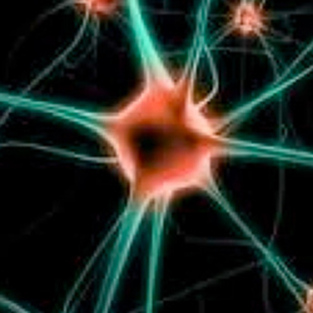
NEUROLOGICAL PAIN CREAM
Nerve pain is caused by lesions or deformities of the nerve. Symptoms may include burning, tingling, numbness, and shocks of electricity. These symptoms can drastically affect a persons quality of life. Studies have shown that people with nerve pain have the highest rates of sleep problems, anxiety, and depression.
Treating nerve pain can sometimes be difficult. Oral medications, although effective, have many undesirable side effects. Topical creams for nerve pain can drastically reduce those negative effects by providing relief to the nerves located at the site of the pain while keeping systemic absorption to a minimum. Delivering the right medication to the right trigger point can decrease the amount of medication the patient uses.
OK Compounding can combine the right medications into a topically applied cream that will treat the specific triggers that cause neuropathic pain. Our neuro-pain cream can be customized to meet an individual patientsʼ needs while drastically improving compliance and efficacy. Contact your Go2Strategy Health Solutions representative, or pharmacist for more information about treating neuropathic pain.
Nerve pain is caused by lesions or deformities of the nerve. Symptoms may include burning, tingling, numbness, and shocks of electricity. These symptoms can drastically affect a persons quality of life. Studies have shown that people with nerve pain have the highest rates of sleep problems, anxiety, and depression.
Treating nerve pain can sometimes be difficult. Oral medications, although effective, have many undesirable side effects. Topical creams for nerve pain can drastically reduce those negative effects by providing relief to the nerves located at the site of the pain while keeping systemic absorption to a minimum. Delivering the right medication to the right trigger point can decrease the amount of medication the patient uses.
OK Compounding can combine the right medications into a topically applied cream that will treat the specific triggers that cause neuropathic pain. Our neuro-pain cream can be customized to meet an individual patientsʼ needs while drastically improving compliance and efficacy. Contact your Go2Strategy Health Solutions representative, or pharmacist for more information about treating neuropathic pain.
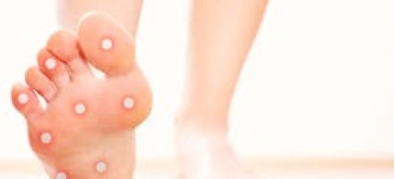
COMMON TYPES OF NEUROPATHIC PAIN
Ketamine acts peripherally to antagonize NMDA receptors as well as provide local anesthesia.
Flurbiprofen is an anti-inflammatory (NSAID). NSAIDs have long been used for chronic and acute musculoskeletal pain. Used topically, unwanted gastrointestinal and cardiovascular side effects are drastically avoided.
Gabapentin is used to treat the neuropathic hyperexcitabilty at the pain site.
Baclofen and Cyclobenzaprine are muscle relaxers that when used topically are highly effective in muscle tissue at the site of pain, allowing for effective dosing with minimal systemic absorption that could cause drowsiness if taken orally.
- Fibromyalgia
- Diabetic neuropathy
- Chemo-Induced Neuropathy
- Shingles
- HIV induced neuropathy
- Neuropathy from injury
Ketamine acts peripherally to antagonize NMDA receptors as well as provide local anesthesia.
Flurbiprofen is an anti-inflammatory (NSAID). NSAIDs have long been used for chronic and acute musculoskeletal pain. Used topically, unwanted gastrointestinal and cardiovascular side effects are drastically avoided.
Gabapentin is used to treat the neuropathic hyperexcitabilty at the pain site.
Baclofen and Cyclobenzaprine are muscle relaxers that when used topically are highly effective in muscle tissue at the site of pain, allowing for effective dosing with minimal systemic absorption that could cause drowsiness if taken orally.
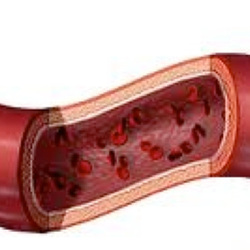
VASCULAR PAIN CREAM
Vascular pain usually occurs in the peripheral extremities such as arms, calves, legs, etc.. Signs and symptoms include leg pain when walking, burning, cramping, numbness, or weakness. Vascular pain is caused by fatty build up in the arteries which causes the smooth muscle on the interior walls of the arteries to “stiffen” or harden.
Oral medications, procedures, and exercise have all shown some benefit in relieving vascular pain but are not always an option for every patient who suffers from vascular pain. Using a topical cream may allow these patients an alternative to traditional treatments. Compounding specific ingredients that work together to target the specific causes of the pain at the actual site of the pain can provide patients with relief they have not been able to find in current treatment options. Although the actual cause of the pain, the fatty buildup in the arteries, cannot be treated with a topical pain cream, giving some relief may allow the patient to walk farther and longer. Walking as exercise, has been proven to help with vascular pain; however it is often avoided if a patient fears that walking may actually cause them pain.
Although vascular pain is difficult to treat, we believe that a topical cream from OK Compounding can help your patients. Contact your Go2Strategy Health Solutions representative, or pharmacist for questions regarding vascular pain treatment with topical preparations.
Vascular pain usually occurs in the peripheral extremities such as arms, calves, legs, etc.. Signs and symptoms include leg pain when walking, burning, cramping, numbness, or weakness. Vascular pain is caused by fatty build up in the arteries which causes the smooth muscle on the interior walls of the arteries to “stiffen” or harden.
Oral medications, procedures, and exercise have all shown some benefit in relieving vascular pain but are not always an option for every patient who suffers from vascular pain. Using a topical cream may allow these patients an alternative to traditional treatments. Compounding specific ingredients that work together to target the specific causes of the pain at the actual site of the pain can provide patients with relief they have not been able to find in current treatment options. Although the actual cause of the pain, the fatty buildup in the arteries, cannot be treated with a topical pain cream, giving some relief may allow the patient to walk farther and longer. Walking as exercise, has been proven to help with vascular pain; however it is often avoided if a patient fears that walking may actually cause them pain.
Although vascular pain is difficult to treat, we believe that a topical cream from OK Compounding can help your patients. Contact your Go2Strategy Health Solutions representative, or pharmacist for questions regarding vascular pain treatment with topical preparations.
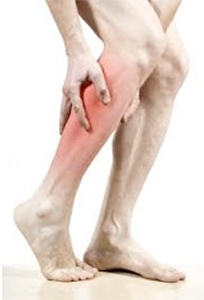
Nifedipine works locally in the tissues to dilate capillaries and relax smooth muscle.
Clonidine provides analgesic affects and potentiates the effects of other anesthetics in the formula.
Ketamine provides anaelgesic effects and works as a local anaesthetic. It has been used intravineously to prevent vascular pain caused by other agents.
Gabapentin helps to reduce any underlying neuropathic pain that commonly accompanies vascular pain.
Flurbiprofen reduces inflammation in the surrounding tissues and aids in reducing the inflammatory response.
Bupivacaine is used as a local anaesthetic.
Clonidine provides analgesic affects and potentiates the effects of other anesthetics in the formula.
Ketamine provides anaelgesic effects and works as a local anaesthetic. It has been used intravineously to prevent vascular pain caused by other agents.
Gabapentin helps to reduce any underlying neuropathic pain that commonly accompanies vascular pain.
Flurbiprofen reduces inflammation in the surrounding tissues and aids in reducing the inflammatory response.
Bupivacaine is used as a local anaesthetic.
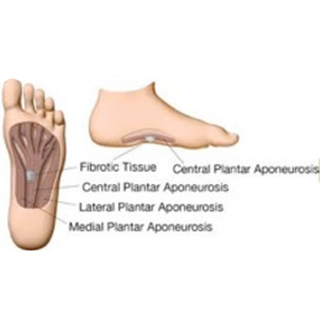
PLANTAR FIBROMATOSIS
Plantar fibromatosis is a fibrotic tissue disorder which is characterized by the presence of excess collagen or fibrotic tissue. The most common symptoms of plantar fibromatosis are the dense, firm nodules that can be felt just under the skin on the bottom of the foot. The nodules are painful with standing or walking and do not resolve on their own. Cells known as fibroblasts are responsible for the production of the primary components of plantar fibromas such as collagen, fibronectin and glycosaminoglycans. Research has shown that the process by which these components are released out of the fibroblast requires calcium. There are several mechanisms topical treatments target to treat plantar fibromatosis. The first allows for the progression of the condition to be slowed or stopped and second for the fibroma to actually be reduced. The remodeling of this tissue allows for the discomfort and the fibroma to be reduced or eliminated.
Topical creams allow for noninvasive treatment, decreased systemic effects, and consistent, constant treatment at the direct site of the fibroma.
Verapamil is a calcium channel blocker. Research has demonstrated that it has the ability to increase the activity of collagenase, which enhances the remodeling of scar (fibrotic) tissue, increase procollagenase activity, and therefore increase collagen breakdown. Topically, verapamil has the ability to remodel an already formed and stable fibroma into more healthy tissue.
Diclofenac is an anti-inflammatory (NSAID). NSAIDʼs have been shown useful in treating plantar fibromatosis but are often limited on the duration of use due to gastrointestinal or cardiovascular effects. Topical formulation allows for consistent use without these concerns.
Baclofen , a GABA derivative, is used to reduce spasms and cramping.
Bupivacaine acts as a local anaesthetic.
Mometasone is a glucocorticosteroid used to reduce inflammation. Steroids have been used in various formulations and vehicles to treat plantar fibromatosis.
Plantar fibromatosis is a fibrotic tissue disorder which is characterized by the presence of excess collagen or fibrotic tissue. The most common symptoms of plantar fibromatosis are the dense, firm nodules that can be felt just under the skin on the bottom of the foot. The nodules are painful with standing or walking and do not resolve on their own. Cells known as fibroblasts are responsible for the production of the primary components of plantar fibromas such as collagen, fibronectin and glycosaminoglycans. Research has shown that the process by which these components are released out of the fibroblast requires calcium. There are several mechanisms topical treatments target to treat plantar fibromatosis. The first allows for the progression of the condition to be slowed or stopped and second for the fibroma to actually be reduced. The remodeling of this tissue allows for the discomfort and the fibroma to be reduced or eliminated.
Topical creams allow for noninvasive treatment, decreased systemic effects, and consistent, constant treatment at the direct site of the fibroma.
Verapamil is a calcium channel blocker. Research has demonstrated that it has the ability to increase the activity of collagenase, which enhances the remodeling of scar (fibrotic) tissue, increase procollagenase activity, and therefore increase collagen breakdown. Topically, verapamil has the ability to remodel an already formed and stable fibroma into more healthy tissue.
Diclofenac is an anti-inflammatory (NSAID). NSAIDʼs have been shown useful in treating plantar fibromatosis but are often limited on the duration of use due to gastrointestinal or cardiovascular effects. Topical formulation allows for consistent use without these concerns.
Baclofen , a GABA derivative, is used to reduce spasms and cramping.
Bupivacaine acts as a local anaesthetic.
Mometasone is a glucocorticosteroid used to reduce inflammation. Steroids have been used in various formulations and vehicles to treat plantar fibromatosis.
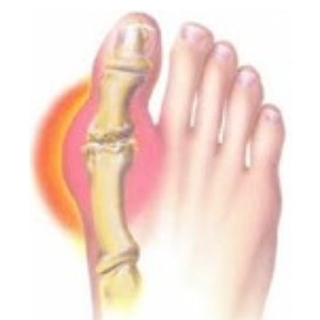
GOUT PAIN
Gout is a condition that causes pain and discomfort in nearly 8 million Americans. Men are affected more than women due to higher uric acid levels in the blood. The pain caused from an acute gout “attack”, also known as gouty arthritis, is a deposition of sodium urate crystals in connective tissues and articular cartilage around a joint or joints. This deposition causes extreme inflammation in the joint and surrounding tissues.
NSAIDs and steroids have long been known to be highly effective at treating gout related pain and inflammation; however, their dangerous side effects include gastrointestinal discomfort, bleeding, and cardiovascular events.
Topical use of creams for pain not only drastically reduce these side effects, it allows for continued high dose use as needed.
OK Compounding can provide a gout pain cream that can be individualized to a patientʼs needs. Contact your Go2Strategy Health Solutions representative, or pharmacist for more resources or questions regarding gout pain.
Gout is a condition that causes pain and discomfort in nearly 8 million Americans. Men are affected more than women due to higher uric acid levels in the blood. The pain caused from an acute gout “attack”, also known as gouty arthritis, is a deposition of sodium urate crystals in connective tissues and articular cartilage around a joint or joints. This deposition causes extreme inflammation in the joint and surrounding tissues.
NSAIDs and steroids have long been known to be highly effective at treating gout related pain and inflammation; however, their dangerous side effects include gastrointestinal discomfort, bleeding, and cardiovascular events.
Topical use of creams for pain not only drastically reduce these side effects, it allows for continued high dose use as needed.
OK Compounding can provide a gout pain cream that can be individualized to a patientʼs needs. Contact your Go2Strategy Health Solutions representative, or pharmacist for more resources or questions regarding gout pain.
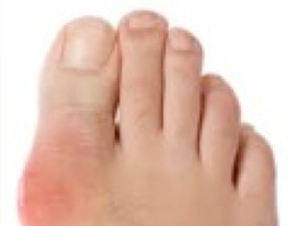
GOUT PAIN SYMPTOMS
Indomethacin and Flurbiprofen , although they do have certain differences, are both NSAIDʼs. NSAIDʼs have long been known to be used for treating gout oraly. Topical formulations decrease the risk for side effects while allowing for higher percentage of active drug to reach the exact site where the tissue and joints are effected.
Mometasone is a glucocorticosteroid used to reduce inflammation as well.
Bupivacaine is used as a local anaesthetic.
- Intense joint pain
- lingering discomfort
- Swelling
- Redness
Indomethacin and Flurbiprofen , although they do have certain differences, are both NSAIDʼs. NSAIDʼs have long been known to be used for treating gout oraly. Topical formulations decrease the risk for side effects while allowing for higher percentage of active drug to reach the exact site where the tissue and joints are effected.
Mometasone is a glucocorticosteroid used to reduce inflammation as well.
Bupivacaine is used as a local anaesthetic.
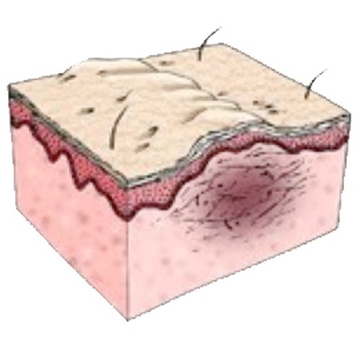
SCAR THERAPY
One of the main components of skin is the collagen protein. Skin collagen is primarily made from fibroblasts. During normal healing processes, fibroblasts begin leaking into the clot just under the scab. Once the clot is sufficiently soaked with fibroblasts, these cells begin to secrete collagen and release growth factor. The growth factor allows fibroblasts to begin expressing their contractile proteins. This allows the fibroblasts to contract and pull a wound tightly together.
Scar tissue is made from the same type of proteins as normal skin, however the composition of the proteins causes a difference in appearance. Specifically, instead of lying in a “basket weave” structure, the proteins are pulled together all in one direction, giving the scar a raised appearance. The most common of these forms of scar tissue are both hypertrophic and keloid scars. Their texture is usually smoother, does not contain sweat glands or hair follicles. These factors can lead to continuous skin irritation. A treatment regimen that begins as the scar is forming and continues for many months is the best method for reducing scar tissue.
OK Compounding scar therapy cream is formulated in VersaPro cream base. VersaPro is an elegant, highly moisturizing cream formula with excellent penetrating properties. It is appealing for both pharmaceutical and cosmetic purposes. Contact your Go2Strategy Health Solutions representative or pharmacist for more information on how we can help your patients scar.
Scar Therapy Cream Ingredients Tranilast is an anti-allergic drug. Studies have shown tranilast to inhibit the release of histamine and prostaglandins from mast cells. It also suppresses collagen synthesis of fibroblasts derived from keloid and hypertrophic scar tissue but not healthy tissue. Tranilast also inhibits the release of transforming growth factor (TGF)-beta 1 from keloid fibroblasts. Topical treatment has been found to be more beneficial than when given orally. Relief of burning sensation, pain and pruritis associated with keloid scars.
Mometasone, a medium potency glucocorticosteroid, is used to reduce inflammation. Topical therapy is preferred over systemic therapy due to fewer associated adverse effects. Mometasone produces anti-inflammatory, antipruritic and vasoconstrictive actions.
Levocetirizine is a histamine (H1) receptor antagonist. Topical antihistamines can be used to reduce swelling and eliminate itching. Itching can lead to unintentional scratching which only further damages the tissue. Antihistamines have other anti-scar properties as well: they inhibit the inflammatory response which reduces scar formation. They are also antiproliferative agents and have been shown to inhibit the deposition and synthesis of collagen in keloid fibroblasts through suppression o f the release of TGF-b1 from fibroblasts. Levocetirizine is a long acting antihistamine which provide for less frequent dosing and longer relief for patients.
One of the main components of skin is the collagen protein. Skin collagen is primarily made from fibroblasts. During normal healing processes, fibroblasts begin leaking into the clot just under the scab. Once the clot is sufficiently soaked with fibroblasts, these cells begin to secrete collagen and release growth factor. The growth factor allows fibroblasts to begin expressing their contractile proteins. This allows the fibroblasts to contract and pull a wound tightly together.
Scar tissue is made from the same type of proteins as normal skin, however the composition of the proteins causes a difference in appearance. Specifically, instead of lying in a “basket weave” structure, the proteins are pulled together all in one direction, giving the scar a raised appearance. The most common of these forms of scar tissue are both hypertrophic and keloid scars. Their texture is usually smoother, does not contain sweat glands or hair follicles. These factors can lead to continuous skin irritation. A treatment regimen that begins as the scar is forming and continues for many months is the best method for reducing scar tissue.
OK Compounding scar therapy cream is formulated in VersaPro cream base. VersaPro is an elegant, highly moisturizing cream formula with excellent penetrating properties. It is appealing for both pharmaceutical and cosmetic purposes. Contact your Go2Strategy Health Solutions representative or pharmacist for more information on how we can help your patients scar.
Scar Therapy Cream Ingredients Tranilast is an anti-allergic drug. Studies have shown tranilast to inhibit the release of histamine and prostaglandins from mast cells. It also suppresses collagen synthesis of fibroblasts derived from keloid and hypertrophic scar tissue but not healthy tissue. Tranilast also inhibits the release of transforming growth factor (TGF)-beta 1 from keloid fibroblasts. Topical treatment has been found to be more beneficial than when given orally. Relief of burning sensation, pain and pruritis associated with keloid scars.
Mometasone, a medium potency glucocorticosteroid, is used to reduce inflammation. Topical therapy is preferred over systemic therapy due to fewer associated adverse effects. Mometasone produces anti-inflammatory, antipruritic and vasoconstrictive actions.
Levocetirizine is a histamine (H1) receptor antagonist. Topical antihistamines can be used to reduce swelling and eliminate itching. Itching can lead to unintentional scratching which only further damages the tissue. Antihistamines have other anti-scar properties as well: they inhibit the inflammatory response which reduces scar formation. They are also antiproliferative agents and have been shown to inhibit the deposition and synthesis of collagen in keloid fibroblasts through suppression o f the release of TGF-b1 from fibroblasts. Levocetirizine is a long acting antihistamine which provide for less frequent dosing and longer relief for patients.

